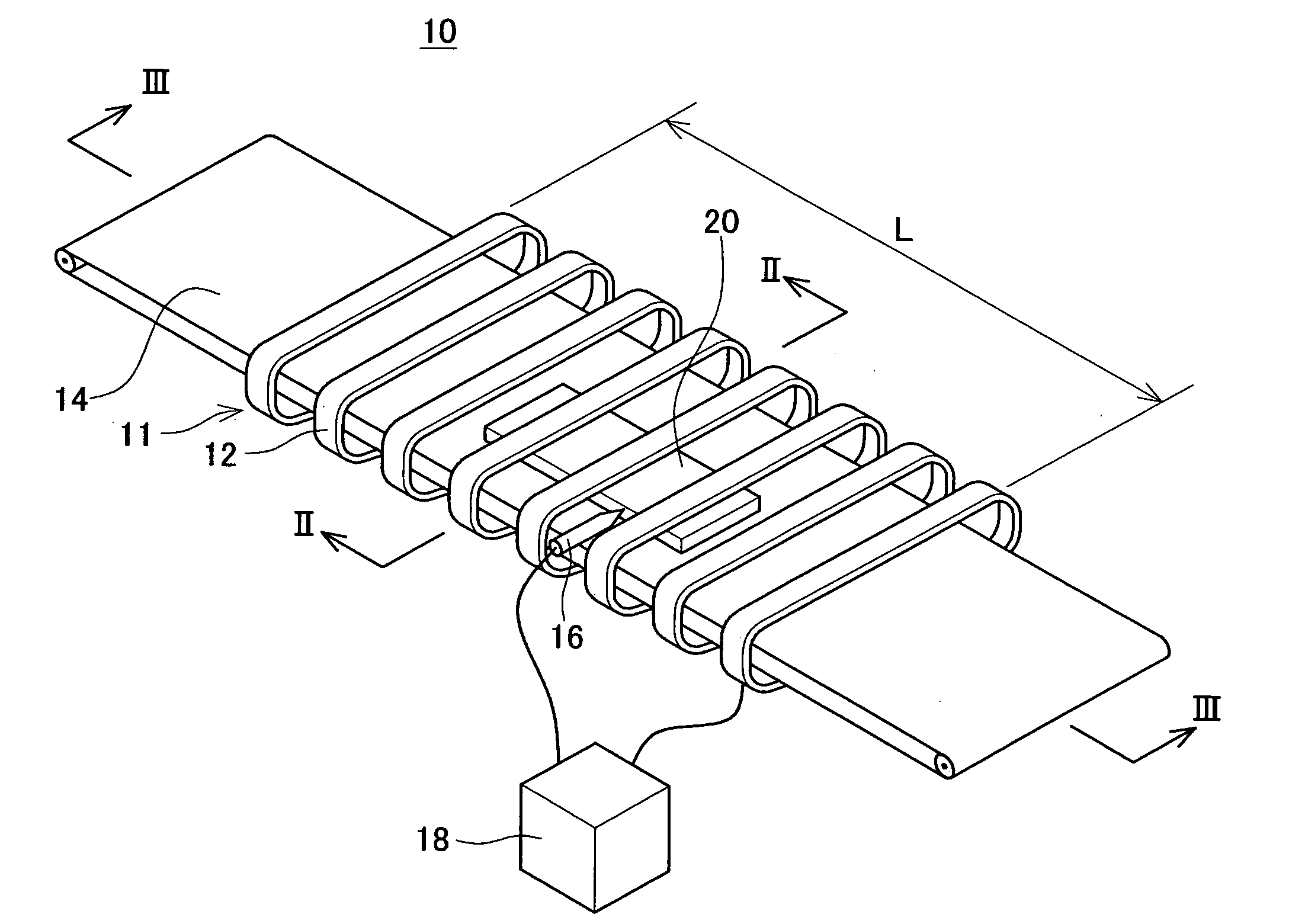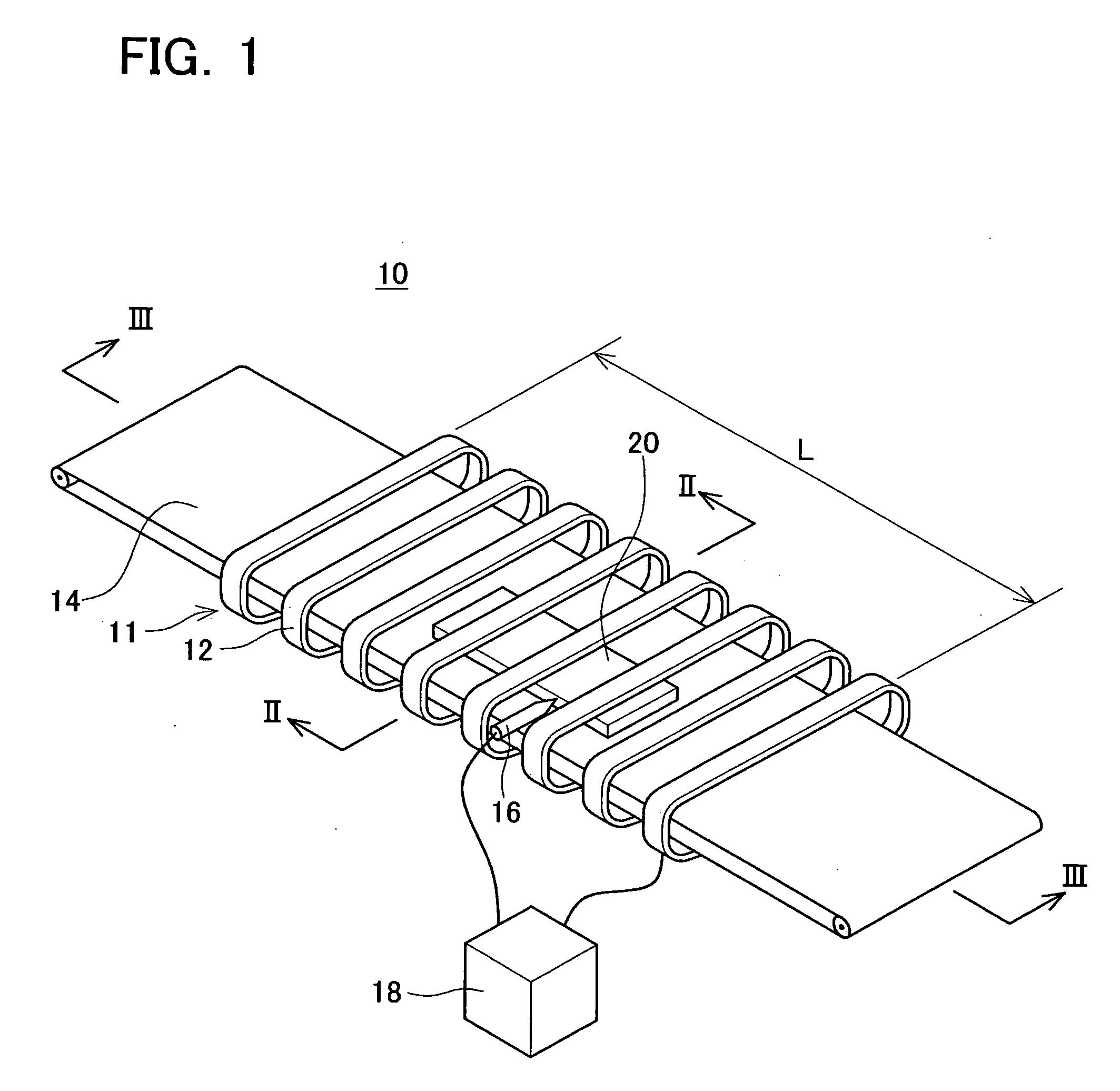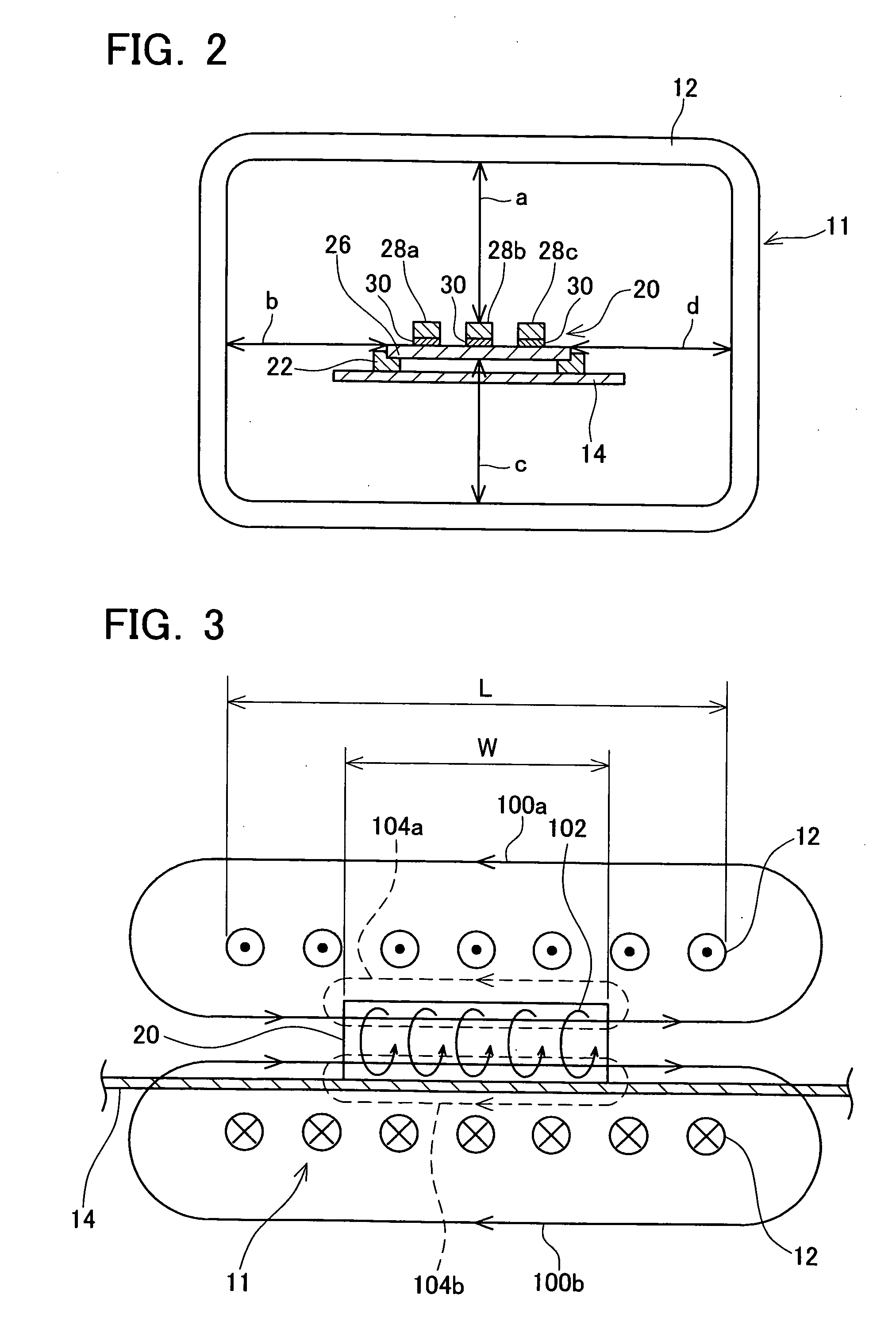Apparatus and a method of soldering a part to a board
a technology of soldering apparatus and soldering parts, which is applied in the direction of soldering apparatus, manufacturing tools, electric/magnetic/electromagnetic heating, etc., and can solve the problems of parts not being fixed to the board, parts may overheat, and parts may not meet the requirements of the application
- Summary
- Abstract
- Description
- Claims
- Application Information
AI Technical Summary
Benefits of technology
Problems solved by technology
Method used
Image
Examples
embodiment 1
[0065] Preferable embodiments will described below with referring drawings.
[0066]FIG. 1 shows first embodiment of the soldering machine 10 according to the present invention. The soldering machine 10 comprises a conveyor 14 (corresponding to a positioning device recited in claims) that conveys a board supporting circuit parts via solder material in a solid state, an induction coil 11 that surrounds the middle of the conveyor 14, a temperature sensor 16 that measures the temperature of the board, and a controller 18 that controls those units. The controller 18 applies alternating current to the induction coil 11. The induction coil 11 is formed by winding a winding 12 into a helical shape.
[0067] Hereinafter, a board that includes a circuit part and solder material will be referred to as work piece 20. The circuit part, solder material, and board are not individually illustrated in FIG. 1 but illustrated in FIG. 2. The induction coil 11 is drawn in FIG. 1 as it is formed by winding ...
embodiment 2
[0100] Next, a method of manufacturing a device having a board on which circuit parts are soldered will be described. In the present embodiment, the device is a circuit board having predetermined functions.
[0101] In the manufacturing process, the circuit board, such as the board 26 shown in FIG. 2, is first positioned in the central region of the cross-section of the inner space of the induction coil 11, as shown in FIGS. 1 and 2. At this point, circuit parts 28a, 28b, 28c and solid solder material 30 are mounted on the board 26. Then, an alternating current will be made to pass through the induction coil 11 by the controller 18. By making an alternating current pass through the induction coil 11, an alternating magnetic field may be generated in the induction coil 11. Due to the induction heating effect of the alternating magnetic field, the solder material 30 on the board 26 may be heated and melted. At the point at which the solder material 30 has melted, the flow of the alterna...
PUM
| Property | Measurement | Unit |
|---|---|---|
| length | aaaaa | aaaaa |
| areas | aaaaa | aaaaa |
| magnetic field | aaaaa | aaaaa |
Abstract
Description
Claims
Application Information
 Login to View More
Login to View More - R&D
- Intellectual Property
- Life Sciences
- Materials
- Tech Scout
- Unparalleled Data Quality
- Higher Quality Content
- 60% Fewer Hallucinations
Browse by: Latest US Patents, China's latest patents, Technical Efficacy Thesaurus, Application Domain, Technology Topic, Popular Technical Reports.
© 2025 PatSnap. All rights reserved.Legal|Privacy policy|Modern Slavery Act Transparency Statement|Sitemap|About US| Contact US: help@patsnap.com



